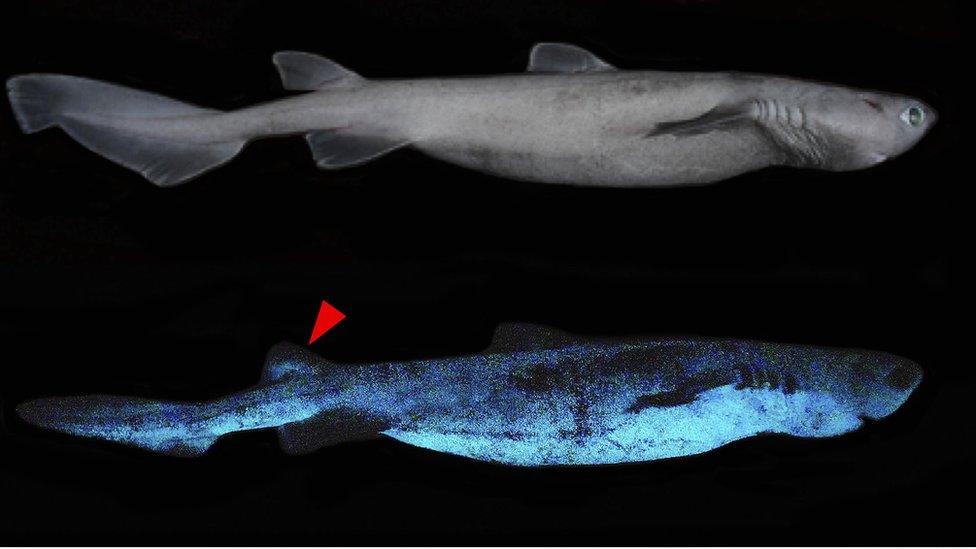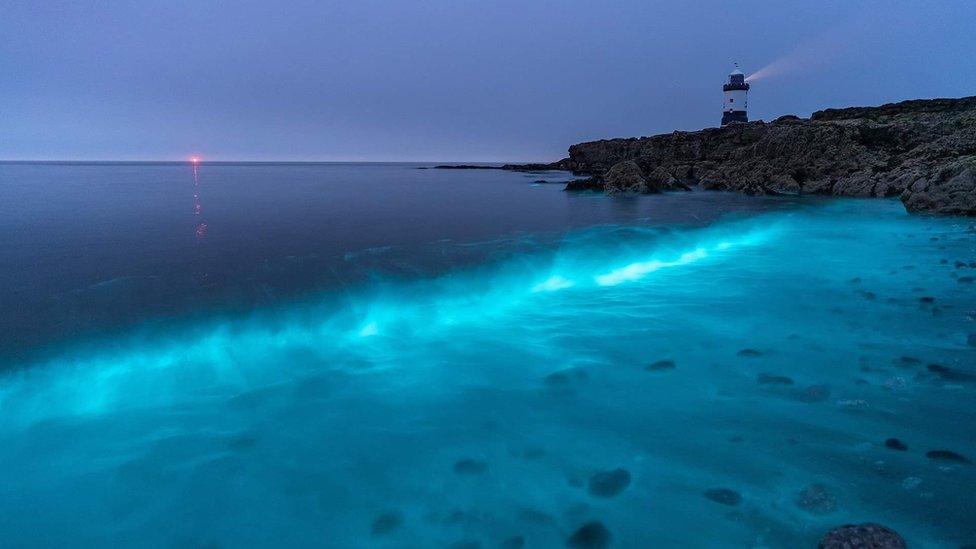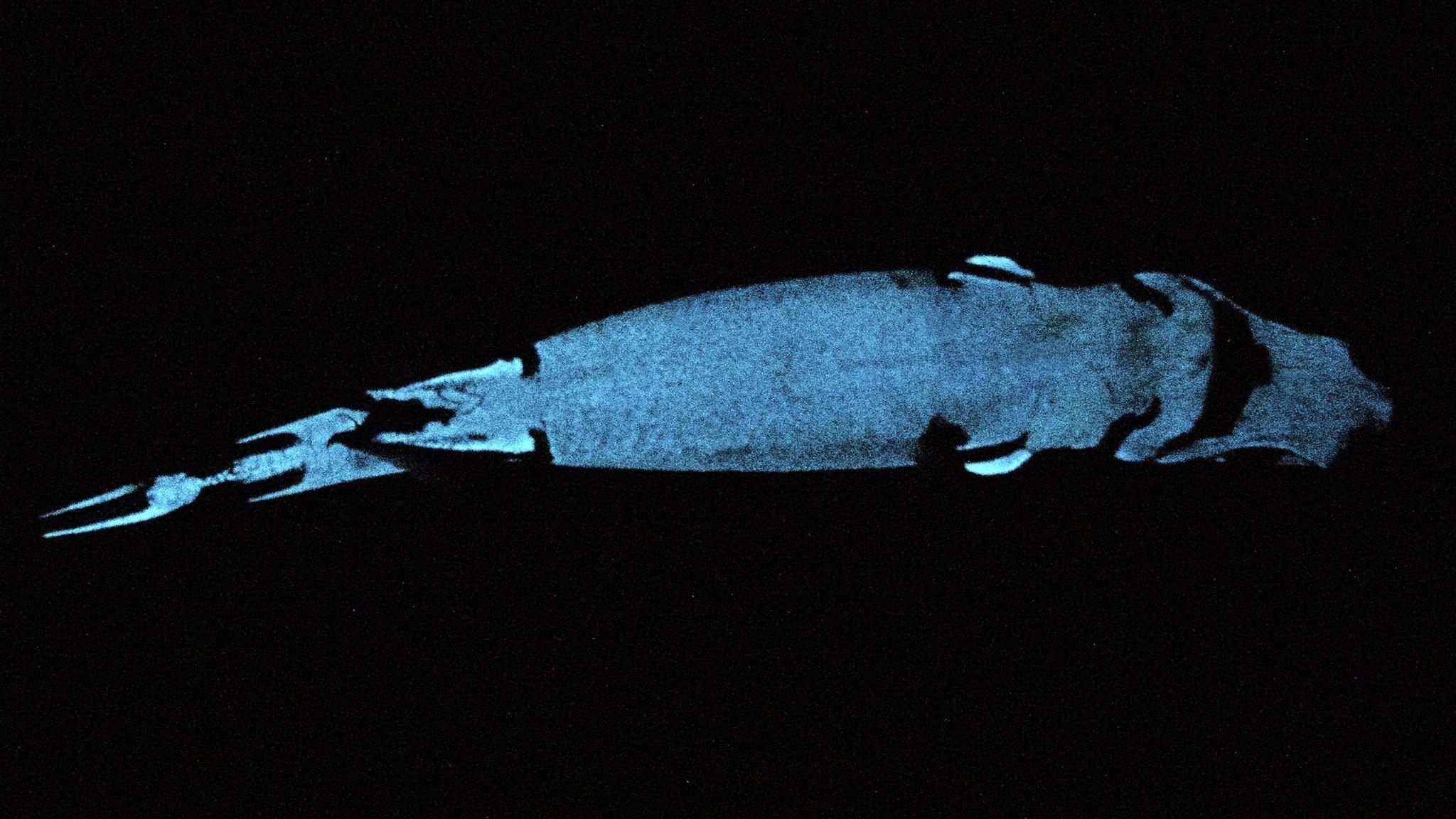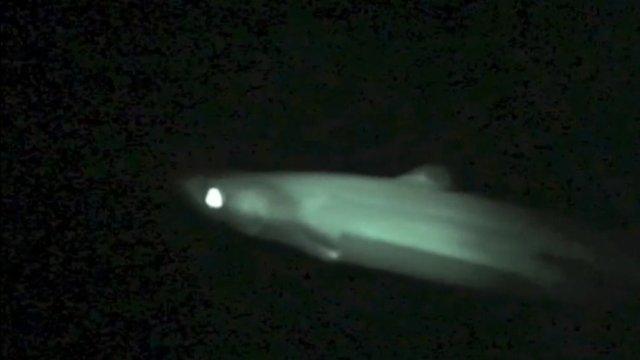Glow-in-the-dark sharks found off New Zealand coast
- Published

Scientists say they have found that three deepwater shark species living off New Zealand glow in the dark.
The species were collected from the Chatham Rise - an area of ocean floor to the east of New Zealand - in January of last year, according to the study.
One of them, the kitefin shark, is now the largest known luminous vertebrate and can reach up to 180cm (5ft 11in).
Bioluminescence was also confirmed in the blackbelly lanternshark and southern lanternshark.
The three species were already known to marine biologists but this is the first time that the phenomenon of bioluminescence - organisms emitting light - has been identified in them.
While many marine animals - as well as some insects such as fireflies - produce their own light, this is the first time it has been found in larger sharks.
The researchers suggest the sharks' glowing underbellies may help them hide from predators or other threats beneath them.
They say the bioluminescence is achieved through thousands of photophores (light-producing cells) located within the sharks' skin.
The three studied species inhabit a space called the mesopelagic zone, often called the twilight zone, which ranges from 200m to 1,000m depth (the maximum depth reached by sunlight).
The species in question face an environment with no place to hide, hence the need for counterillumination as a form of camouflage, the researchers add.
In the study, external, the scientists from the Université Catholique de Louvain in Belgium and the National Institute of Water and Atmospheric Research in New Zealand explain the importance of bioluminescence for marine creatures:
It "has often been seen as a spectacular yet uncommon event at sea, but considering the vastness of the deep sea and the occurrence of luminous organisms in this zone, it is now more and more obvious that producing light at depth must play an important role structuring the biggest ecosystem on our planet".

You may also be interested in:
A shark biologist from Belgium explains how the glow-in-the-dark shark can both hide and advertise itself using light (2013 report)
Related topics
- Published19 July 2019

- Published21 February 2013

- Published21 February 2013
